ART NEWS:Dec.01
![]() Lee Seung Taek is a representative figure in Korean experimental art who has continued since the 1950s until today with a prolific body of work spanning installation, sculpture, painting, photography, land art, and performance art. Lee Seung Taek’s exhibition “Non-Art: The Inversive Act” is a large-scale retrospective that aims to shed new light on the 60-year career of an artist who played a pioneering role in transforming Korean contemporary art. The exhibition includes reproductions of major works from the 1960s based on historical materials, as well as restorations of the artist’s early works in pursuit of “non-sculpture”. Some of Lee’s major installations of the 1970s and 1980s, have been restaged in the museum’s outdoor settings, providing the opportunity for a direct physical experience. The exhibition also illuminates the key influence of shamanism in Lee’s work. Numerous photo collages and photographs combined with painting (called “photo paintings” or “photo pictures”) are shared from the period between the 1960s and 1990s, in an attempt to newly spotlight the significance of Lee’s photography. Info: National Museum of Modern and Contemporary Art, Seoul, 30 Samcheong ro, Jongno-gu, Seoul, Duration: 25/11/2020-28/3/2021, Days & Hours: Tue-Thu 10:00-18:00, Fri-Sat 10:00-21:00, www.mmca.go.kr
Lee Seung Taek is a representative figure in Korean experimental art who has continued since the 1950s until today with a prolific body of work spanning installation, sculpture, painting, photography, land art, and performance art. Lee Seung Taek’s exhibition “Non-Art: The Inversive Act” is a large-scale retrospective that aims to shed new light on the 60-year career of an artist who played a pioneering role in transforming Korean contemporary art. The exhibition includes reproductions of major works from the 1960s based on historical materials, as well as restorations of the artist’s early works in pursuit of “non-sculpture”. Some of Lee’s major installations of the 1970s and 1980s, have been restaged in the museum’s outdoor settings, providing the opportunity for a direct physical experience. The exhibition also illuminates the key influence of shamanism in Lee’s work. Numerous photo collages and photographs combined with painting (called “photo paintings” or “photo pictures”) are shared from the period between the 1960s and 1990s, in an attempt to newly spotlight the significance of Lee’s photography. Info: National Museum of Modern and Contemporary Art, Seoul, 30 Samcheong ro, Jongno-gu, Seoul, Duration: 25/11/2020-28/3/2021, Days & Hours: Tue-Thu 10:00-18:00, Fri-Sat 10:00-21:00, www.mmca.go.kr
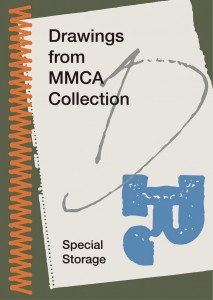 Drawing had been considered secondary to painting until the mid-20th century when research on the artistic medium finally began. Despite its belated recognition, drawing is recognized as an alternative approach in contemporary art based on its creativity and potential. A drawing is, at times, fragmented and discontinuous while at others private and individual. Drawing as a starting point rather than a destination communicates the aesthetic value of what is naked. The exhibition “Drawings from MMCA Collection” is an open storage of 800 or more drawings from MMCA’s collection. They represent MMCA’s collection, demonstrating a sense of form and artistic experiments at work. Special storage’s Drawings from the MMCA’s Collection provides the opportunity to explore the shifts in the concept of drawings from various perspectives through an extensive collection of drawings. The drawings also offer infinite diversity and generative movements, and new narratives in the face of order and chaos. Info: National Museum of Modern and Contemporary Art, Cheongju, 314, Sangdang-ro, Cheongwon-gu, Cheongju-si, Chungcheongbuk-do, Cheongju, Duration: 1/12/2020-31/10/2020, Days & hours; Tue-Sun 10:00-18:00, www.mmca.go.kr
Drawing had been considered secondary to painting until the mid-20th century when research on the artistic medium finally began. Despite its belated recognition, drawing is recognized as an alternative approach in contemporary art based on its creativity and potential. A drawing is, at times, fragmented and discontinuous while at others private and individual. Drawing as a starting point rather than a destination communicates the aesthetic value of what is naked. The exhibition “Drawings from MMCA Collection” is an open storage of 800 or more drawings from MMCA’s collection. They represent MMCA’s collection, demonstrating a sense of form and artistic experiments at work. Special storage’s Drawings from the MMCA’s Collection provides the opportunity to explore the shifts in the concept of drawings from various perspectives through an extensive collection of drawings. The drawings also offer infinite diversity and generative movements, and new narratives in the face of order and chaos. Info: National Museum of Modern and Contemporary Art, Cheongju, 314, Sangdang-ro, Cheongwon-gu, Cheongju-si, Chungcheongbuk-do, Cheongju, Duration: 1/12/2020-31/10/2020, Days & hours; Tue-Sun 10:00-18:00, www.mmca.go.kr
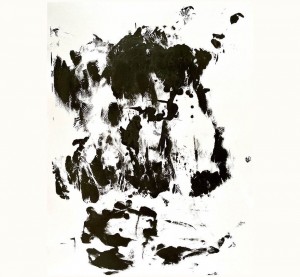 The exhibition “THREESOME / Friends + Art” can be seen as a free, artistic unfolding across Malene Birger, Lis Kasper Bang and Bertel Bjerre close friendship. Beside their friendship, the artists wish to create a space for creativity and inspiration based on their individual experiences from the fashion, photography, interior and design industries. The exhibition therefore includes photographs, paintings and works on paper. Through a common thread being that they all explore an uninhibited approach with a playful interpretation to the media and materials. Malene Birger presents her aesthetic in her well known monochromatic, strong graphic and abstract works, often inspired by African culture and the universe in general, expressing its contrast in the form of light and dark. Malene Birger works from her studios in Greece and Spain. Lis Kasper Bang is a Danish portrait and art photographer who spent her early years in South Africa and where her interest in photography began. Since Kasper Bang’s first exhibition in 2005, she has experimented with different photo techniques that primarily focus on the human expression: from portraits that seek to capture the essence of the model, to the artistic interpretations of the human form. Bertel Bjerre was originally trained as a men’s fashion designer from the School of Applied Arts in Copenhagen. Over the years and after a longer period and study in Pientrasanta in northern Italy, he developed and worked with sculpture and later with painting. Info: Galerie Mikael Andersen, Bredgade 63, Copenhagen, Duration: 5/12/2020-9/1/2021, Days & Hours: Tue-Fri 12:00-18:00, Sat 11:00-15:00, http://mikaelandersen.com
The exhibition “THREESOME / Friends + Art” can be seen as a free, artistic unfolding across Malene Birger, Lis Kasper Bang and Bertel Bjerre close friendship. Beside their friendship, the artists wish to create a space for creativity and inspiration based on their individual experiences from the fashion, photography, interior and design industries. The exhibition therefore includes photographs, paintings and works on paper. Through a common thread being that they all explore an uninhibited approach with a playful interpretation to the media and materials. Malene Birger presents her aesthetic in her well known monochromatic, strong graphic and abstract works, often inspired by African culture and the universe in general, expressing its contrast in the form of light and dark. Malene Birger works from her studios in Greece and Spain. Lis Kasper Bang is a Danish portrait and art photographer who spent her early years in South Africa and where her interest in photography began. Since Kasper Bang’s first exhibition in 2005, she has experimented with different photo techniques that primarily focus on the human expression: from portraits that seek to capture the essence of the model, to the artistic interpretations of the human form. Bertel Bjerre was originally trained as a men’s fashion designer from the School of Applied Arts in Copenhagen. Over the years and after a longer period and study in Pientrasanta in northern Italy, he developed and worked with sculpture and later with painting. Info: Galerie Mikael Andersen, Bredgade 63, Copenhagen, Duration: 5/12/2020-9/1/2021, Days & Hours: Tue-Fri 12:00-18:00, Sat 11:00-15:00, http://mikaelandersen.com
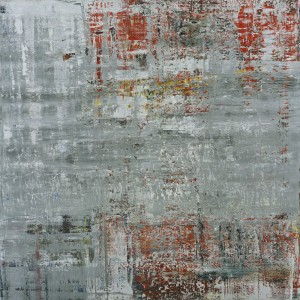 Gerhard Richter’s exhibition “Cage paintings” follows their inclusion, as a cornerstone, in the artist’s retrospective, “Gerhard Richter: Painting After All “at the Metropolitan Museum of Art in New York earlier this year. In conjunction with this key group of six paintings, a new group of drawings created by the artist on consecutive days over the summer of 2020 are shown for the first time. In the group of “Cage paintings” three of the canvases measure 290 x 290 cm, while the other three are slightly larger, at 300 x 300 cm each. The paintings all have a similar thickly painted surface that is rough and textured in appearance. They are composed of a progression of horizontal and vertical bands and a series of multi-directional scratches and indentations that are scraped into the painted surface. In specific areas of the paintings, the upper layers of paint have been removed and several sublayers of color exposed. In each painting, the layers of colours and the composition of the bands and marks are different. “Cage (1)” is predominantly lime green in hue with a wide bottle green bar running horizontally across the upper quarter of the composition, and at the far right of the work is a wide vertical band composed mostly of white, but also containing yellow and green. “Cage (2)” is largely pale grey, white and lime green, with small exposed areas of bright red and charcoal grey. “Cage (3” is composed of multiple scratch marks and indentations and is mostly light grey and white, with small patches of lime green, bottle green, dark grey, blue and red. “Cage (4)” has multiple sublayers of paint exposed, while “Cage (5)” is predominantly grey with white, red, pale yellow and a small amount of black. “Cage (6): is the most varied in its range of exposed underlying colours, but it overall composition is mainly green, white, yellow, black and blue. The paintings are designed to be hung together in one large gallery space. Info: Gagosian Gallery, 456 North Camden Drive, Beverly Hills, Duration: 3/12/2020-30/1/2021, Days & Hours: Tue-Sat 10:00-17:30 by appointment only (Schedule Your Visit), https://gagosian.com
Gerhard Richter’s exhibition “Cage paintings” follows their inclusion, as a cornerstone, in the artist’s retrospective, “Gerhard Richter: Painting After All “at the Metropolitan Museum of Art in New York earlier this year. In conjunction with this key group of six paintings, a new group of drawings created by the artist on consecutive days over the summer of 2020 are shown for the first time. In the group of “Cage paintings” three of the canvases measure 290 x 290 cm, while the other three are slightly larger, at 300 x 300 cm each. The paintings all have a similar thickly painted surface that is rough and textured in appearance. They are composed of a progression of horizontal and vertical bands and a series of multi-directional scratches and indentations that are scraped into the painted surface. In specific areas of the paintings, the upper layers of paint have been removed and several sublayers of color exposed. In each painting, the layers of colours and the composition of the bands and marks are different. “Cage (1)” is predominantly lime green in hue with a wide bottle green bar running horizontally across the upper quarter of the composition, and at the far right of the work is a wide vertical band composed mostly of white, but also containing yellow and green. “Cage (2)” is largely pale grey, white and lime green, with small exposed areas of bright red and charcoal grey. “Cage (3” is composed of multiple scratch marks and indentations and is mostly light grey and white, with small patches of lime green, bottle green, dark grey, blue and red. “Cage (4)” has multiple sublayers of paint exposed, while “Cage (5)” is predominantly grey with white, red, pale yellow and a small amount of black. “Cage (6): is the most varied in its range of exposed underlying colours, but it overall composition is mainly green, white, yellow, black and blue. The paintings are designed to be hung together in one large gallery space. Info: Gagosian Gallery, 456 North Camden Drive, Beverly Hills, Duration: 3/12/2020-30/1/2021, Days & Hours: Tue-Sat 10:00-17:30 by appointment only (Schedule Your Visit), https://gagosian.com
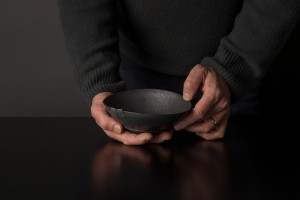 The works that Edmund de Waal made during lockdown earlier this year and are on show in his solo exhibition “Some winter pots” is the first time in sixteen years that de Waal has made single works that are not parts of installations. They are specifically designed to be touched and held in the hand. A potter since childhood and an acclaimed writer, de Waal makes porcelain works that function as repositories of human memory and experience. Drawing equally from Eastern and Western traditions, Edmund de Waal ‘s works blend a minimalist visual language with invocations of the written word, positing the act of collection of objects, texts, materials, and thoughts, as an artistic form. De Waal was alone in his studio and silent and needed to make vessels to touch and hold, to pass on. He needed to return to what he know: the bowl, the open dish, the lidded jar. When you pick them up you will find the places where the artist have marked and moved the soft clay. Some of these pots are broken and patched on their rims with folded lead and gold; others are mended with gold lacquer. Some hold shards of porcelain. Info: Gagosian, 17–19 Davies Street, London, Duration: 3/12/2020-16/1/2021, Days & Hours: Tue-Sat 10:00-18:00 by appointment (Schedule Your Visit), https://gagosian.com
The works that Edmund de Waal made during lockdown earlier this year and are on show in his solo exhibition “Some winter pots” is the first time in sixteen years that de Waal has made single works that are not parts of installations. They are specifically designed to be touched and held in the hand. A potter since childhood and an acclaimed writer, de Waal makes porcelain works that function as repositories of human memory and experience. Drawing equally from Eastern and Western traditions, Edmund de Waal ‘s works blend a minimalist visual language with invocations of the written word, positing the act of collection of objects, texts, materials, and thoughts, as an artistic form. De Waal was alone in his studio and silent and needed to make vessels to touch and hold, to pass on. He needed to return to what he know: the bowl, the open dish, the lidded jar. When you pick them up you will find the places where the artist have marked and moved the soft clay. Some of these pots are broken and patched on their rims with folded lead and gold; others are mended with gold lacquer. Some hold shards of porcelain. Info: Gagosian, 17–19 Davies Street, London, Duration: 3/12/2020-16/1/2021, Days & Hours: Tue-Sat 10:00-18:00 by appointment (Schedule Your Visit), https://gagosian.com
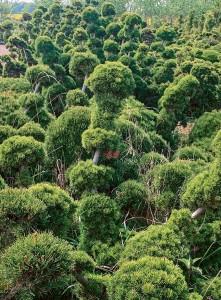 Entitled “False ruins and lost innocence” Isa Melsheimer’s solo exhibition includes three large-scale ceramics, textile works, and a suite of gouaches. The exhibition’s title is taken from an influential lecture by architectural historian Charles Jencks, who famously criticized the classicizing elements of James Sterling’s 1977-84 addition to the Staatsgalerie Stuttgart by laconically noting: “one can sit on these false ruins and ponder the truth of our lost innocence”. Known for her engagement with the history of architectural styles, Isa Melsheimer’s works are expressions of her intense research as well as formal investigations. The artist, whose work engages with modernist, postmodernist, and brutalist aesthetics, has in recent years increasingly introduced organic elements into the buildings, infused by her reading of post-human theoretical debates, as well as her engagement with Metabolist architecture, a movement originating in 1960s Japan. Isa Melsheimer’s works carry their far-reaching associations lightly: personal, literary, historical, philosophical, architectural references are resolved in an intense materiality. Info: Esther Schipper Gallery, Potsdamer Strasse 81E, Berlin, Duration: 6/12/2020-16/1/2021, Days & Hours: Tue-Sat 11:00-18:00, www.estherschipper.com
Entitled “False ruins and lost innocence” Isa Melsheimer’s solo exhibition includes three large-scale ceramics, textile works, and a suite of gouaches. The exhibition’s title is taken from an influential lecture by architectural historian Charles Jencks, who famously criticized the classicizing elements of James Sterling’s 1977-84 addition to the Staatsgalerie Stuttgart by laconically noting: “one can sit on these false ruins and ponder the truth of our lost innocence”. Known for her engagement with the history of architectural styles, Isa Melsheimer’s works are expressions of her intense research as well as formal investigations. The artist, whose work engages with modernist, postmodernist, and brutalist aesthetics, has in recent years increasingly introduced organic elements into the buildings, infused by her reading of post-human theoretical debates, as well as her engagement with Metabolist architecture, a movement originating in 1960s Japan. Isa Melsheimer’s works carry their far-reaching associations lightly: personal, literary, historical, philosophical, architectural references are resolved in an intense materiality. Info: Esther Schipper Gallery, Potsdamer Strasse 81E, Berlin, Duration: 6/12/2020-16/1/2021, Days & Hours: Tue-Sat 11:00-18:00, www.estherschipper.com
